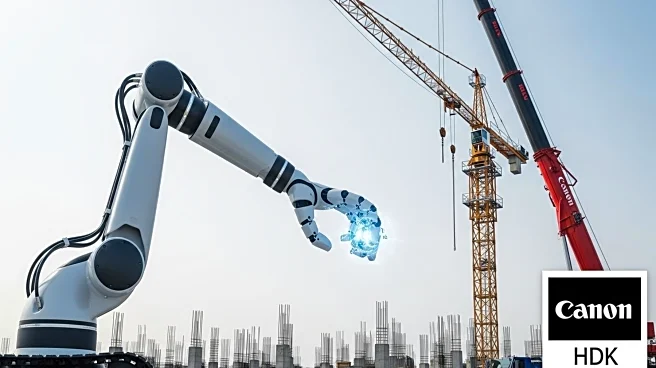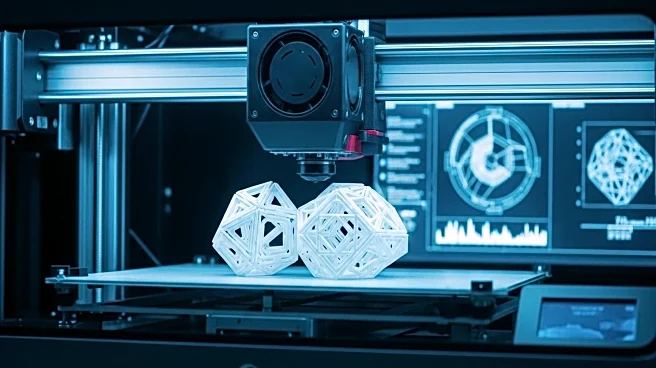What's Happening?
A recent report by the Royal Institution of Chartered Surveyors (RICS) highlights a significant gap between the construction industry's intentions to adopt artificial intelligence (AI) and the actual implementation of such technologies. The survey, which included responses from over 2,200 professionals worldwide, found that 45% of respondents reported no AI implementation in their organizations, while only 1.5% have integrated AI across multiple processes. Despite the recognized potential of AI to enhance progress monitoring, safety management, and sustainability, the industry remains slow to adopt these technologies. The report also notes that 56% of investors plan to increase funding for AI, indicating a growing interest in the technology.
Why It's Important?
The slow adoption of AI in the construction industry is significant as it highlights the sector's traditional resistance to technological change, which could impact its competitiveness and efficiency. AI has the potential to revolutionize construction processes by improving safety, reducing costs, and enhancing project management. However, the lack of widespread implementation suggests that many companies may miss out on these benefits. The industry's hesitation could also affect its ability to meet increasing demands for sustainable and efficient building practices. As investors show a growing interest in AI, companies that fail to adapt may find themselves at a disadvantage.
What's Next?
To bridge the adoption gap, RICS recommends that construction companies take immediate steps to upskill their workforce and establish leadership groups to identify AI use cases. In the medium term, companies should monitor AI performance and gather user feedback to support scaling efforts. Long-term strategies include expanding successful AI applications across different functions and regions. As the industry reaches an AI tipping point, widespread adoption could occur rapidly if companies develop comprehensive programs focused on integrating the technology.










